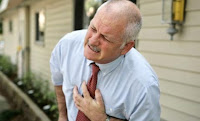
No old motto better than "Prevention is better than cure". This goes for anyone, especially in people who have high risk factors.
Priority of prevention, performed mainly on:
a. Patients with CHD, peripheral arterial disease, and cerebrovascular atherosclerosis.
b. Patients without symptoms but considered high risk because of:
Priority of prevention, performed mainly on:
a. Patients with CHD, peripheral arterial disease, and cerebrovascular atherosclerosis.
b. Patients without symptoms but considered high risk because of:
















